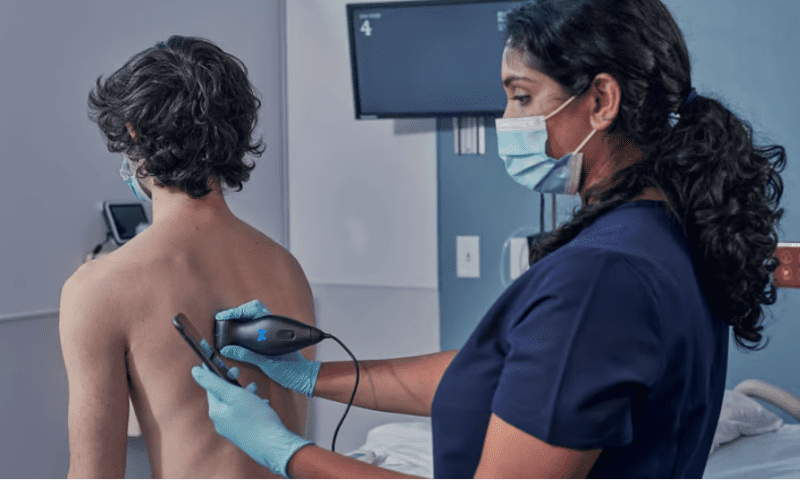SAN FRANCISCO — For years, the most in-depth diagnostic scans available have come with hefty price tags attached. But a new spate of imaging technologies is aiming to not only significantly slash those costs but also to ensure anyone who needs image-guided care can get it.
Butterfly Network, for one, has developed a handheld ultrasound probe that’s capable of scanning the entire body—and, as of 2017, is cleared by the FDA to do so. It’s essentially the real-life fulfillment of Star Trek’s tricorder, “the one probe to rule them all,” as Darius Shahida, the company’s strategy and business development chief, put it in an interview with Fierce Medtech during the J.P. Morgan Healthcare Conference in San Francisco on Monday.
The probe is currently priced at $2,699, far less than the bulky, whole-body scanning systems currently found in hospitals, which can set a facility back between $15,000 and $30,000, Shahida noted.
Butterfly’s ultimate vision for the device would not only slot it into everyday hospital care but also aims to bring it into individual homes, thanks to telehealth technology allowing doctors to guide untrained users through performing ultrasound scans of themselves, their patients or other members of their household in real time.
“The desired end state is Butterfly is as ubiquitous as a stethoscope,” Shahida said. “I envision a world where patients with congestive heart failure, with renal failure, with neurogenic bladder are using the device from the convenience of their homes.”
To date, Butterfly’s technology has reached thousands of clinicians. The company has also begun distributing the devices beyond traditional hospital settings: In his five years at the company, Shahida said the “most compelling and impactful moment” he’s experienced there came just a few months ago, when Butterfly traveled to Kenya to train 500 midwives to perform a trio of basic maternal health scans in the span of just 10 weeks.
“If you can do those three things, you can change the course of care for that baby. You can potentially save that baby and the mother carrying it,” Shahida said.
Viz.ai, meanwhile, is building out a broad slate of artificial intelligence tools that analyze scans from hospitals’ existing imaging technology. Each AI tool has been trained to look for a specific health condition; if spotted, the program automatically alerts a patient’s care team, allowing for faster triage to potentially lifesaving care.
So far, Viz has racked up FDA clearances for seven of these tools—but, within just three to five years, it’s hoping to see the number of algorithms offered on its platform grow more than tenfold, CEO Chris Mansi, M.D., said in an interview with Fierce Medtech at the conference.
“The goal has always been to do this for any disease where if there’s a treatment and the patient gets it, they do better than if they don’t—serious diseases, where they’ll either die or will be disabled because of it, like stroke, brain aneurysms, cancers, cardiac diseases,” he said.
Of that ideal collection of 100 algorithms on its platform, perhaps only about a third would be developed by Viz itself, Mansi said. The rest will come via partnerships with other AI developers or will see Viz working with clinician-innovators to take their ideas the last mile to FDA clearance. However they arrive within the Viz system, though, the overarching goal will be to speed up diagnoses and provide urgently needed care to as many people as possible.
“We’re going to look back on today in 20 years’ time as the ‘medical dark ages,’ because even though we’ve got all these amazing therapies—CAR-T, CRISPR, whatever it might be—how many patients actually get them and benefit? Very few,” Mansi said.
“And so this is designed to really democratize healthcare by using technology to find the patients,” he continued. “It doesn’t matter where you show up to the hospital, doesn’t matter what time of day or day of the week or who the doctor is caring for you, that algorithm is going to work the same.”

